





Heavy Vehicles
Heavy goods vehicles (trucks) and buses have an important role to play in the economic wellbeing of any country.
The greater mass of heavy vehicles means that consequences of any crashes they are involved in tend to be severe. As they interact with other road users (especially vulnerable ones such as pedestrians, cyclists and motorcyclists) there can be serious safety consequences, especially without adequate facilities and controls.
Truck occupants are also at risk themselves, particularly in higher speed environments. Trucks may run off the road or collide with other vehicles, with serious consequences to occupants.
Data also exists in some countries on single heavy vehicle crashes that result in multiple fatalities of up to and over 30 deaths. This is from crashes involving public transport heavy vehicles.
Driver errors resulting from speed, drink driving and fatigue all contribute to truck crashes.
Vehicle defects may also play a significant role in truck crashes. Recently manufacturers have made advances in the design of heavy vehicles and in some countries regulation of their use is well established.
In the UK, only heavy goods vehicles that with safety equipment fitted are allowed on London’s roads and are also given a safety rating between zero and five stars, measured by how much a driver can see directly through their cab windows.
There are also many road related factors that influence the risk of crashes. It is often easier and cheaper to improve safety through a change to the road environment than it is to change driver behaviour, so improvements in the road system are an important means of improving road safety.
Road related contributing factors to crashes include:
- inappropriate speeds
- uncontrolled movements and turns, especially at intersections and access points
- lack of separation of vehicles or road users of different size (e.g. lack of facilities for pedestrians and cyclists)
- lack of separation for vehicles travelling in different directions (e.g. lack of median barriers)
- tight radius turns
- long steep grades in conjunction with overloading contributing to brake failure
- seasonal agricultural vehicles using or crossing trunk roads in rural areas
- lack of advanced warning of hazards
- inadequate information to enable road users to negotiate the roadway safely
- presence of hazards, particularly at the roadside (e.g. utility poles and trees)
- poor road surface.
| Name | Cost rating | Effectiveness |
|---|---|---|
| Additional Lane | High | 25 – 40% |
| Central Hatching | Low | 10 – 25% |
| Central Turning Lane Full Length | Low | 10 – 25% |
| Delineation | Low | 10 – 25% |
| Duplication | High | 25 – 40% |
| Intersection – Delineation | Low | 10 – 25% |
| Intersection – Grade Separation | High | 25 – 40% |
| Intersection – Roundabout | Low to Medium | 60% or more |
| Intersection – Signalise | Medium | 25 – 40% |
| Intersection – Turn Lanes (Signalised) | Low to Medium | 10 – 25% |
| Intersection – Turn Lanes (Unsignalised) | Low to Medium | 10 – 25% |
| Lane Widening | Medium to High | 25 – 40% |
| Median Barrier | Medium to High | 60% or more |
| Median Crossing Upgrade | Low to Medium | 25 – 40% |
| One Way Network | Medium | 25 – 40% |
| Parking Improvements | Low to Medium | 10 – 25% |
| Railway Crossing | Medium | 60% or more |
| Realignment – Horizontal | High | 25 – 40% |
| Realignment – Vertical | High | 10 – 25% |
| Regulate Roadside Commercial Activity | Low to Medium | 10 – 25% |
| Restrict/Combine Direct Access Points | Medium to High | 25 – 40% |
| Road Surface Rehabilitation | Medium | 25 – 40% |
| Roadside Safety – Barriers | Medium | 40 – 60% |
| Roadside Safety – Hazard Removal | Low to Medium | 25 – 40% |
| Rumble Strips | Low | 10 – 25% |
| Service Road | High | 25 – 40% |
| Paved Shoulder | Medium | 25 – 40% |
| Skid Resistance | Low to Medium | 25 – 40% |
| Speed Management | Medium | 25 – 40% |
| Traffic Calming | Medium to High | 25 – 40% |
| Name | Cost rating | Effectiveness |
|---|---|---|
| Motor Vehicle Standards | – | – |
| Vehicle Roadworthiness | – | – |
| Name | Cost rating | Effectiveness |
|---|---|---|
| Addressing Alcohol and Other Drugs | – | – |
| Education | – | – |
| Emergency Response | – | – |
| Enforcement | – | – |
| Licensing | – | – |
| Publicity | – | – |
| Safe Speed | – | – |
| Seatbelts | – | – |
Related Images
 State highway in India with 2+1 lane configuration and roadside safety barrier. Image credit: iRAP
State highway in India with 2+1 lane configuration and roadside safety barrier. Image credit: iRAP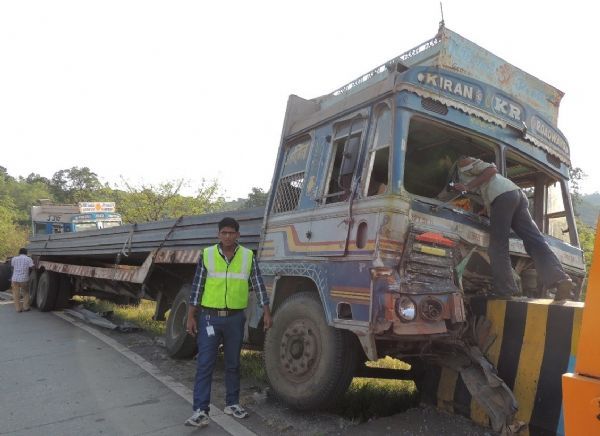 A run-off crash. Barrier end terminals must be designed to minimize risk upon impact. A crash attenuator would be a suitable end treatment in this case. Image credit: JP Research India
A run-off crash. Barrier end terminals must be designed to minimize risk upon impact. A crash attenuator would be a suitable end treatment in this case. Image credit: JP Research India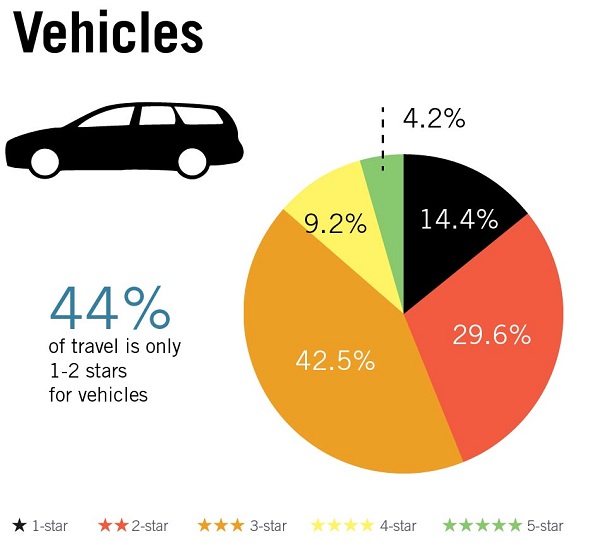 Vehicle occupant Star Ratings by road user type based on a 358,000km sample of roads across 54 countries. Image credit: iRAP
Vehicle occupant Star Ratings by road user type based on a 358,000km sample of roads across 54 countries. Image credit: iRAP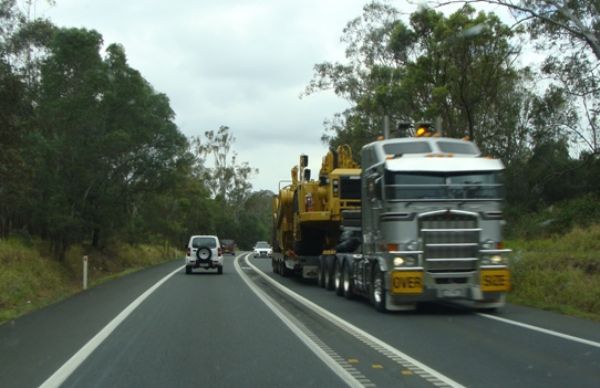 Showing wide centreline treatment incorporating median rumble strips, Old Bruce Highway, Australia. Image credit: Unknown
Showing wide centreline treatment incorporating median rumble strips, Old Bruce Highway, Australia. Image credit: Unknown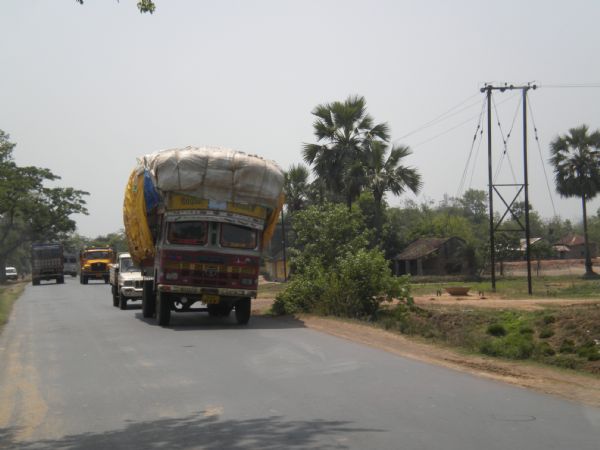 Overload truck, India. Image credit: A.Tiwari IRSM.
Overload truck, India. Image credit: A.Tiwari IRSM.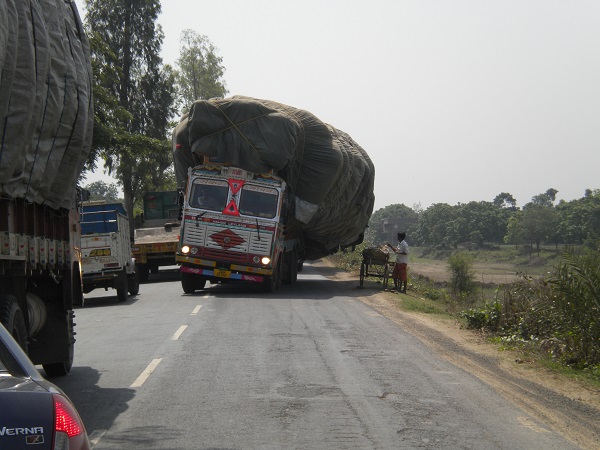 Overloaded truck in India. Image credit: iRAP
Overloaded truck in India. Image credit: iRAP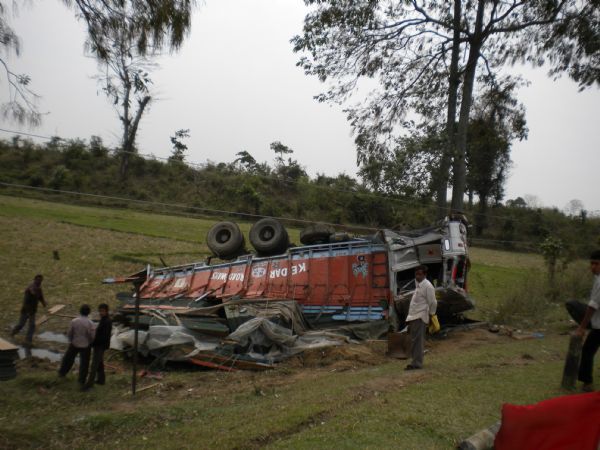 Overturned truck in Assam, India. Image credit: A. Tiwari
Overturned truck in Assam, India. Image credit: A. Tiwari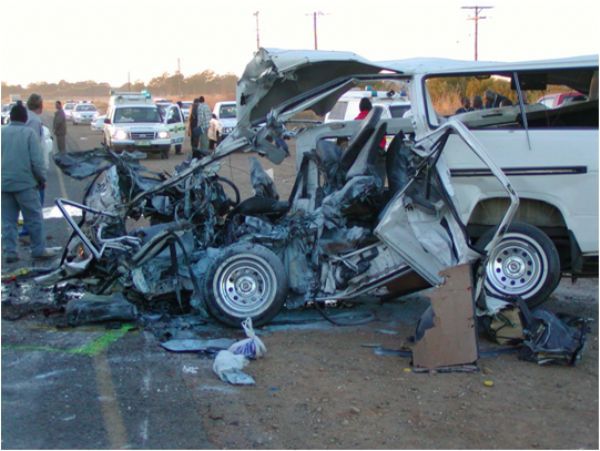 Thirteen primary school teachers were killed instantly when this minibus slammed into an oncoming truck on an undivided highway, South Africa. Image credit: North West Provincial Government
Thirteen primary school teachers were killed instantly when this minibus slammed into an oncoming truck on an undivided highway, South Africa. Image credit: North West Provincial Government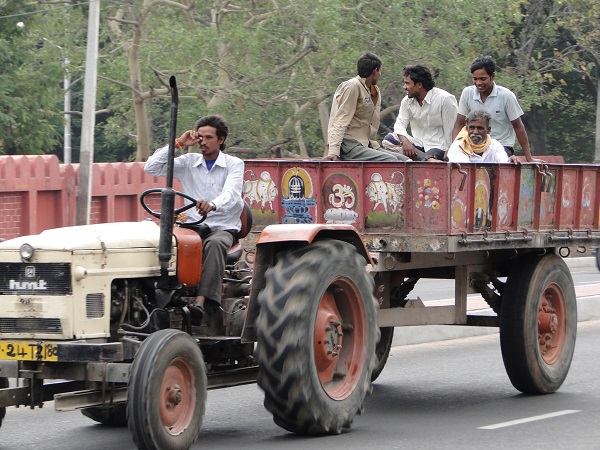 Tractor in India. Image credit: Greg Smith
Tractor in India. Image credit: Greg Smith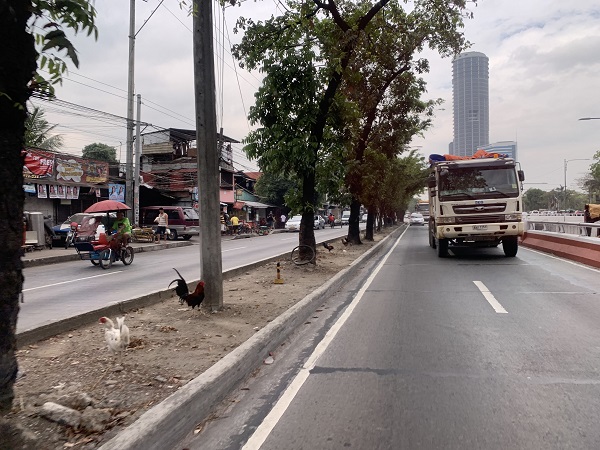 Service road for slow-moving and local traffic in Philippines. Image credit: Alina Burlacu
Service road for slow-moving and local traffic in Philippines. Image credit: Alina Burlacu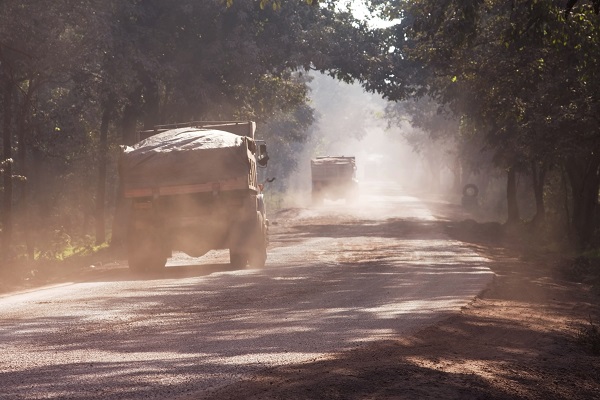 Trucks in India. Image credit: iStock
Trucks in India. Image credit: iStock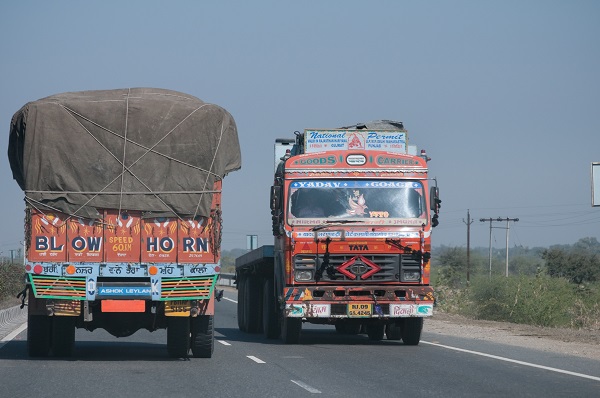 Trucks on an undivided highway in India. Image credit: iStock
Trucks on an undivided highway in India. Image credit: iStock








